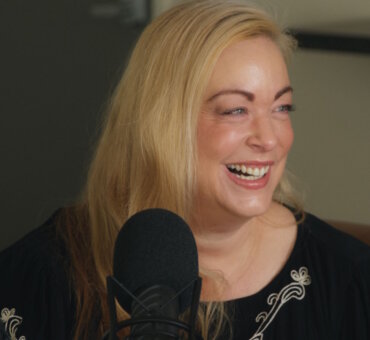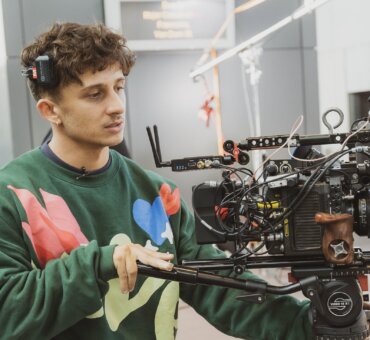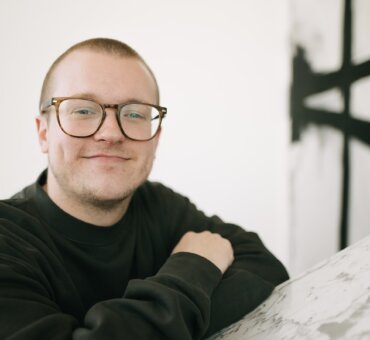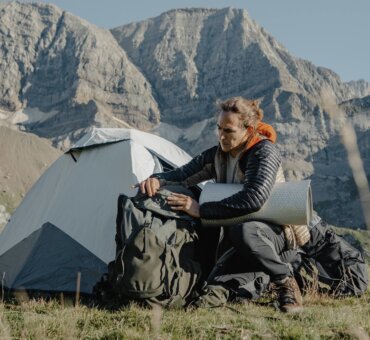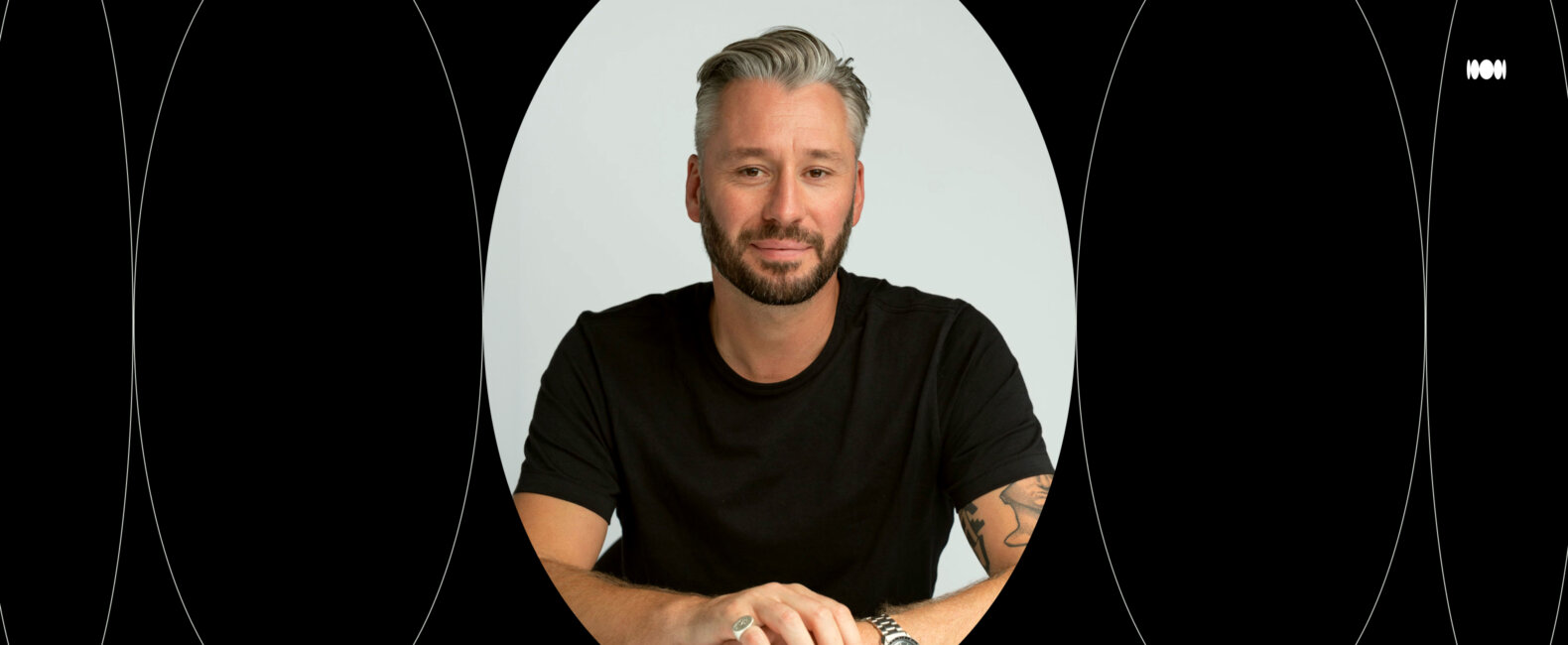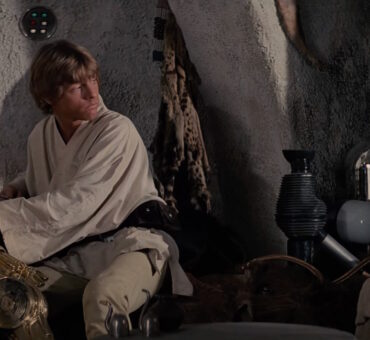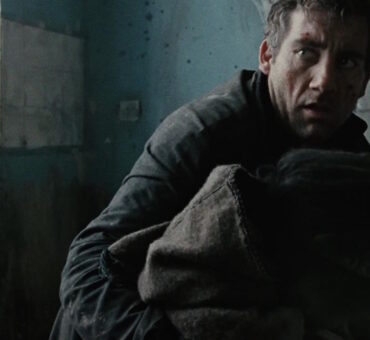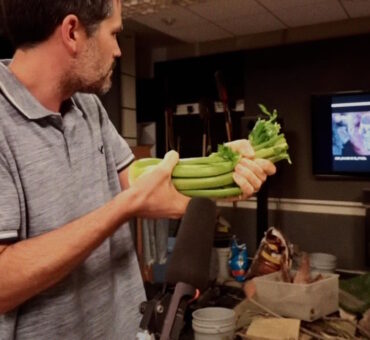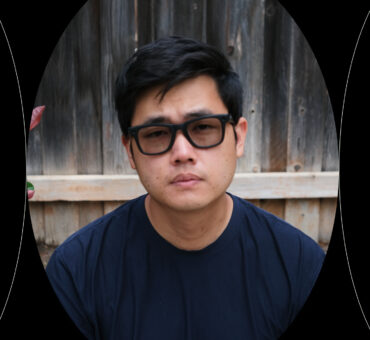Carbon creative director/partner Liam Chapple isn’t afraid to push boundaries.
Drawing inspiration from everything from ’80s graffiti to sci-fi classics like Blade Runner, the commercial filmmaker has steered campaigns for some of the biggest brands in the world: American Express, Nike, Verizon, and others.
And this year, he’ll be among the other industry leaders judging this year’s Musicbed Challenge submissions.
If you want to take the Challenge, you can learn more about here.
Read his interview below to learn more about Liam’s creative journey. We talk about his first “big break” directing a spot for Harrods’ Fine Watch Room and his philosophy on crafting stories that resonate.
Musicbed: What was your first “big break” in advertising?
Liam Chapple: My first project that caught attention was a spot I directed for Harrods’ Fine Watch Room back at Mainframe in London. It was one of the storytelling pieces I oversaw from scratch, including the concept development and design of the hero bumble bee, made entirely out of watch parts.
It was the start of making an insect from watch components to a full concept that included Fabergé eggs and other jewelry and watch-making references.
That film is still on my reel. And thanks to the fantastic work the team created, it’s stood the test of time quite well. It was featured in Stash magazine and got a bit of press. It even reached my future employers at Carbon before I knew them.
How has your creative background shaped your approach as the executive creative director/partner at Carbon?
My graphic design, photography, and animation background influences all of my work, and I’m a bit of a jack of all trades.
I know that phrase has negative connotations. But the rest, rarely repeated part of the quote reads, “but better than a master of one.”
So I’ve intentionally avoided having a single style or tool that I use. Because of this, it’s hard to pinpoint a “Liam Chapple” aesthetic. Instead, I approach each job from the concept and let that inform the style, medium, and look.
I continue to learn using this approach and rarely get bored with whatever I do because it’s often the first time I’ve done it.
Regarding my education, I studied graphic design at Camberwell College of Art in the early 2000s.
The courses I took consisted of a few benches in an otherwise empty space. This led to us fighting for ideas and resources, making us self-sufficient.
We also learned from our awesome tutors that the concept was key. And from the concept, everything followed.
Your work often blends utopian and dystopian themes. How do these concepts influence your creative process?
Being an inner-city kid and growing up through the ’80s and ‘90s in London led me to embrace darker subcultures, such as graffiti and illegal rave scenes. This underbelly of the city felt unexplored by most people and took me to places I’d otherwise have considered out of bounds.
The AICP titles I worked on a few years back definitely leaned into that subterranean, dysptopian world. I wanted to subvert the idea of how advertising affects us as viewers.
But my work’s animation and design aspect ultimately counterpoints this. I typically employ super bright, colorful, and cheerful storylines in keeping with mainstream American brands such as Lucky Charms and Takis.
It’s fun to play in both worlds. I feel fortunate to have access to them.
What elements are essential for crafting a compelling story?
I read a lot and take inspiration from film and art instead of advertising. I’m lucky enough to be friends and work with several incredibly talented filmmakers and artists from whom I learn every day.
A great story has almost always been told before.
The Matrix is based on Plato’s Cave, for instance. That’s a 3,000-year-old story, inspiring one of the greatest modern sci-fi films of the last century.
Stories have a structure that you should learn and then tell in a new and compelling way.
Essentially, we should always look for ways to reinvent the wheel while keeping it around.
How do you manage client expectations while pushing the creative boundaries?
It’s my job to understand what a brand or agency wants and bring it to life in the real world of budget and timelines. Some of that is having an incredible team that always goes above and beyond because they love it.
The other side of that coin is being communicative and collaborative with the agency. We all (mostly) just want to do amazing work that we’re proud of and raise awareness of a brand we like.
I like to have as open a line of communication as possible so we can say, ‘I love this idea you have,’ and ‘Have you thought about this angle on that?’
People come to directors to help them build on their ideas, not just execute them. That’s the most important thing in the creative and pitch stage: adding value to an already great idea and execute it.
For instance, while working on a Verizon job a few years back, I had the pleasure of working closely with Ryan Howard. He’s a visionary creative director with amazing ideas who is also open to hearing thoughts.
I believe this collaborative approach is key to finding the best solutions.
What have been some pivotal moments or projects that shaped your journey at Carbon?
Moving to the US and working at Carbon was a huge moment. It changed my life in several ways, including relocating across the Atlantic.
Since joining, the moment that sticks out is waking up in a hotel room in NYC, having just been made ECD of the company, and having a real Talking Heads “How did I get here?” moment.
It was one of those pivotal moments that led to relocating out east, making new friends, finding new clients, and getting access to another pool of work. However, I still work with a lot of my Midwest and West Coast clients.
Carbon’s three studios are a great network to access the whole of North America. But the East Coast felt like home the moment I landed here. It led to less time in the box and more time overseeing projects and the company’s creativity.
These days, I’m just as likely to give feedback to another CD, as I oversee recruitment and talk about P&Ls with MD Phil Linturn.
It’s much more of a management role, but I can still get my hands dirty on projects.
What advice would you give experienced creative directors looking to transition into executive roles within the creative industry?
I’d hesitate to advise anyone on becoming an ECD because each studio or company is different, and the needs must be tailored to those requirements.
I will say, though, that being people-forward is essential. A huge part of the role is communicating with and being the bridge between agencies, clients, staff, CDs, EPs, and producers.
Being able to react and solve problems at the drop of a hat is also quite often a useful skill.
Also, being able to pivot when a client decides to change an aspect of the Job we’ve been working on is key. When we started working at Carbon, Phil Linturn and I joked, “You should never be bored.” There is always a job to be done, especially in a boutique studio that doesn’t have hundreds of employees.
As a last point, being human and connecting with people is critical.
What’s next for Liam Chapple? Are there any projects on the horizon that you’re excited about?
I’ve focused on writing more and finding a voice outside of advertising.
Telling longer stories about the human experience feels like the logical progression from advertising. And the tools of image I’ve learned over the years can be turned into that.
At the time of writing, I try not to talk too much about projects until they’re done. Doing so can somehow suck the energy out of them.
I read somewhere that talking about an action creates the same dopamine response as the action. So I’ll tell you once it’s made!
What’s something that inspired you or caught your attention lately?
I’ve been a science fiction fan since I was a kid. The two films I constantly think about are Blade Runner and Akira. (See if you can spot Akira and Thundercats references in the Takis spot!)
Most recently, I finished a book called Babel-17, a mind-blowing book set in the future about a language that allows the speaker to slow down time due to its detail and complexity.
It feels like it was written last week but was published in 1966.
It feels like reading Guardians of the Galaxy in terms of the character descriptions and has a touch of the bar scene from Star Wars.
Explore a curated playlist of Liam Chapple’s go-to music to use in his projects—all immediately ready to license for your projects on Musicbed.
Why do you recommend Musicbed as a resource for agencies?
I like the interface and the similar song searches.
The AI search is an interesting feature, as you can suggest a famous or well-known song, and it analyzes that sound and makes similar suggestions.
RELATED: Musicbed’s All-New AI Search Cuts Your Discovery Down To Seconds
This was written as a part of Musicbed Challenge. Want to learn more?


